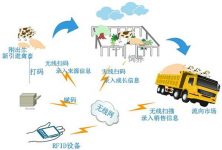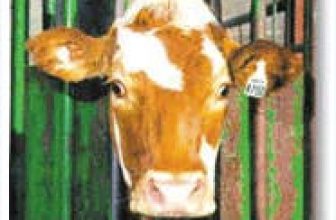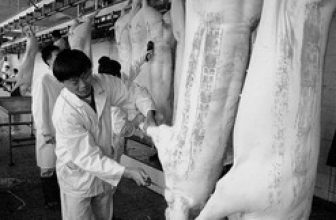
Application case analysis of RFID in modern dairy farms
[ad_1]
Radio Frequency Identification (RFID) is a non-contact automatic identification technology. Its basic principle is to use the transmission characteristics of radio frequency signals and spatial coupling (electrical coupling or electromagnetic coupling) to realize automatic identification of objects. The radio frequency identification system generally consists of two parts, namely, an electronic tag (transponder Tag) and a reader (reader). In the actual application of RFID, the electronic tag is attached to the surface of the identified object or embedded in it. When the identified object with the electronic tag passes through the readable range of the reader, the reader automatically sends the electronic tag in a contactless manner. The agreed identification information of the label is taken out, so as to realize the function of automatically identifying the object or automatically collecting the information of the object’s mark.

1 The application of RFID in modern dairy farms. In dairy farms with large breeding scale, high breeding level, and high individual production capacity, the conventional manual marking and visual identification of dairy cows are difficult to work, low resolution efficiency, and errors. The rate is high, it is difficult to accurately and comprehensively grasp the production level and individual status of the dairy cow group, and it can no longer meet the requirements of modern cattle farm management. As a brand-new non-contact fast automatic identification technology, RFID is being used more and more widely in modern and large-scale breeding industry towels. This technology can be applied to many aspects of dairy cow feeding and production, including automatic ration of cows, statistical analysis of milk production, individual identification of dairy cows, disease monitoring and prevention, product quality control, and animal traceability, etc.
1.1 Individual accurate electronic files are different from traditional cow cards and paper files. The electronic logo designed for cows stores various basic information about cows, and has a 16-digit number compiled in strict accordance with the International Organization for Standardization (ISO) coding standards. , When the cow is born, the electronic identification is fixed on the animal body, and the electronic identification is one-time use, unified number, and unique number. From then on, the electronic identification will accompany him throughout his life, so as to be the only one in the world and achieve the 100 mark for one animal. Electronic signs are usually designed and packaged into injection implantation, ear hook, rumen and foot ring forms. In practical applications, through the supporting software management program, various dynamic data can be correspondingly stored and updated in real time to form a dynamic database of individual dairy cows.
1.2 Real-time monitoring and data collection The application of radio frequency technology can monitor the status of dairy cows in real time, and collect all kinds of data recorded by electronic signs in a timely and accurate manner. The wireless radio frequency system can dynamically identify and record the cow’s weight, feed intake, exercise volume and other data, combined with other sensors in each breeding module to transmit and record the cow’s body condition, the temperature and humidity of the cow farm environment, and the cow’s condition can be dynamic on the computer terminal Monitoring, once the data collected by the system exceeds the health warning limit set in the computer, the management system can automatically identify it and provide timely feedback for the manager to judge the physiological state of the cattle, adjust the feed structure and supply quantity, and formulate treatment plans. Reference data.
1.3 Equipped with modules for auxiliary feeding management The radio frequency system can be used as an information platform to carry many auxiliary feeding modules. The exercise pedometer on the electronic sign records the amount of cow’s exercise, combined with the cumulative data in the database and standard parameters to judge the cow’s sea health status and estrus identification; equipped with precision feeding module, for cows at different growth stages and different milk production on the day , Comprehensive training in the computer system to calculate the optimal amount of refined feed, feedback to the precision feeding system for precision feeding, in order to achieve the purpose of different individual dairy cows; equipped with milk analysis and detection module, can be used for each dairy cow The data of milk production, milk production efficiency, milk composition and other data are monitored, analyzed and compared, and the health status of the udders of the cows can be grasped in time, and the feed formula is scientific and perfect; equipped with the milking station monitoring module, it can record each shift entering the milking parlor , The milking time, milking status, and equipment status of each cow, managers can find out the norms and proficiency of the milking workers in the milking process, and the milking people can also find out during the milking process Questions are fed back to the manager using a pre-set digital language input system.
[ad_2]





